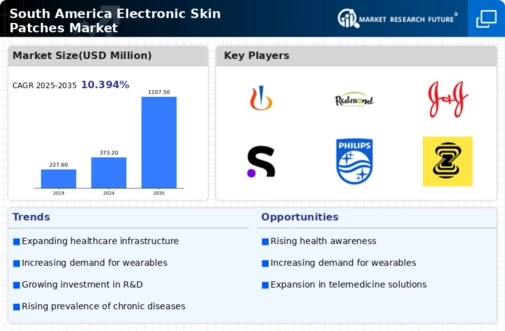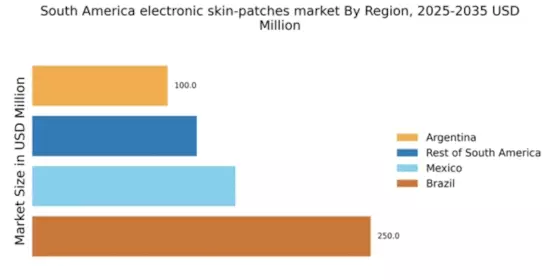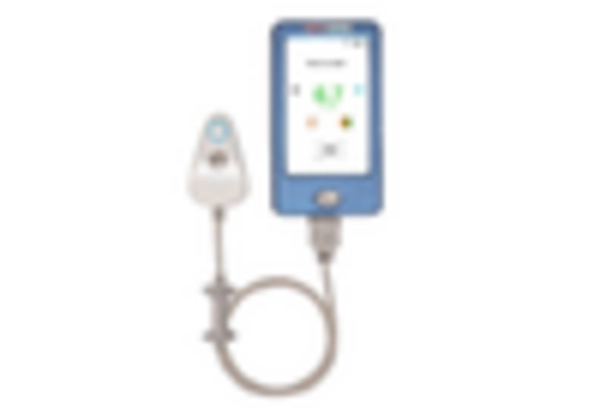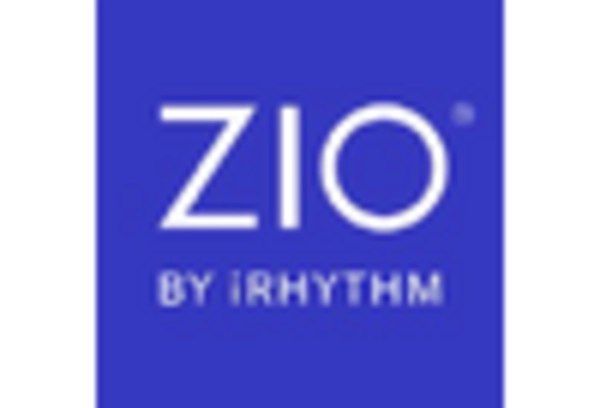The electronic skin-patches market in South America is characterized by a dynamic competitive landscape, driven by technological advancements and increasing demand for remote health monitoring solutions. Key players such as Abbott (US), Medtronic (US), and Philips (NL) are at the forefront, each adopting distinct strategies to enhance their market presence. Abbott (US) focuses on innovation through continuous product development, particularly in glucose monitoring systems, while Medtronic (US) emphasizes strategic partnerships to expand its digital health offerings. Philips (NL) is leveraging its expertise in connected health technologies to integrate electronic skin-patches into broader health management systems, thereby enhancing patient engagement and outcomes. Collectively, these strategies contribute to a competitive environment that is increasingly centered around innovation and patient-centric solutions.
In terms of business tactics, companies are localizing manufacturing and optimizing supply chains to better serve the South American market. The competitive structure appears moderately fragmented, with several players vying for market share. However, the influence of major companies is substantial, as they set industry standards and drive technological advancements. This competitive dynamic encourages smaller firms to innovate and differentiate their offerings, fostering a vibrant market ecosystem.
In October 2025, Abbott (US) announced the launch of a new line of advanced electronic skin-patches designed for continuous glucose monitoring, which integrates seamlessly with its digital health platform. This strategic move not only reinforces Abbott's commitment to innovation but also positions the company to capture a larger share of the growing diabetes management market in South America. The integration of these patches with digital health tools enhances user experience and provides real-time data, which is crucial for effective disease management.
In September 2025, Medtronic (US) entered into a partnership with a local telehealth provider to enhance its remote monitoring capabilities. This collaboration aims to improve access to healthcare services in underserved regions of South America. By leveraging telehealth technologies, Medtronic (US) is likely to expand its reach and improve patient outcomes, thereby solidifying its position in the market. This strategic alliance reflects a broader trend towards integrating digital health solutions with traditional healthcare services.
In August 2025, Philips (NL) unveiled a new electronic skin-patch that utilizes AI algorithms to provide personalized health insights. This innovation is indicative of Philips' focus on integrating advanced technologies into its product offerings. By harnessing AI, Philips (NL) aims to enhance the functionality of its skin-patches, making them more appealing to consumers and healthcare providers alike. This move not only differentiates Philips in a competitive market but also aligns with the growing demand for personalized healthcare solutions.
As of November 2025, current trends in the electronic skin-patches market include a strong emphasis on digitalization, sustainability, and AI integration. Strategic alliances are increasingly shaping the competitive landscape, enabling companies to pool resources and expertise to drive innovation. Looking ahead, it appears that competitive differentiation will evolve from traditional price-based competition to a focus on technological innovation, supply chain reliability, and enhanced patient engagement. This shift suggests that companies that prioritize these aspects are likely to thrive in the increasingly competitive environment.


















Leave a Comment